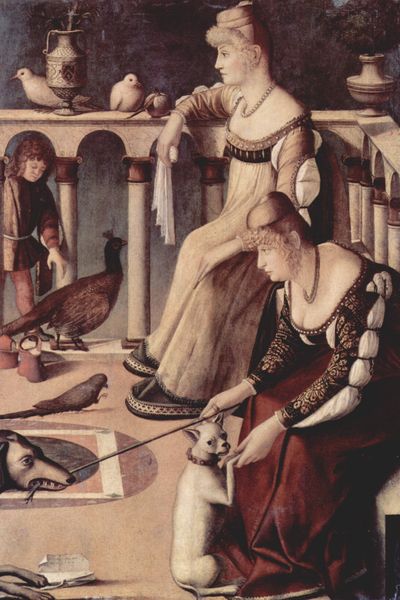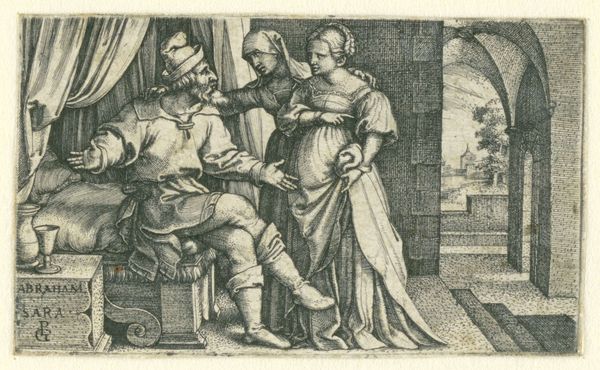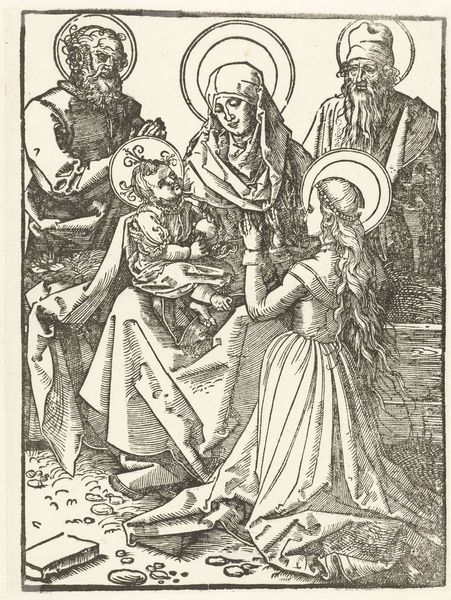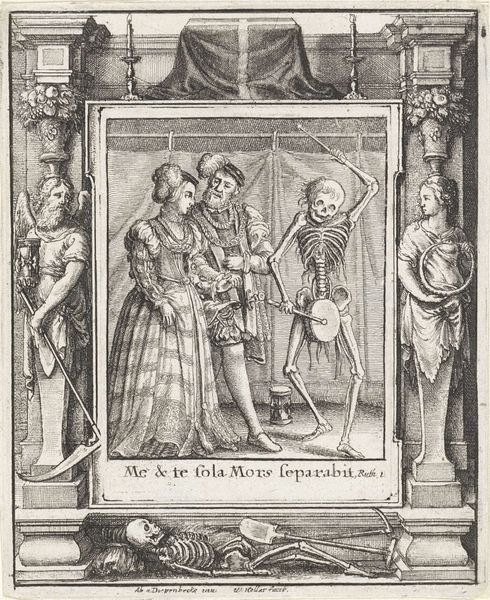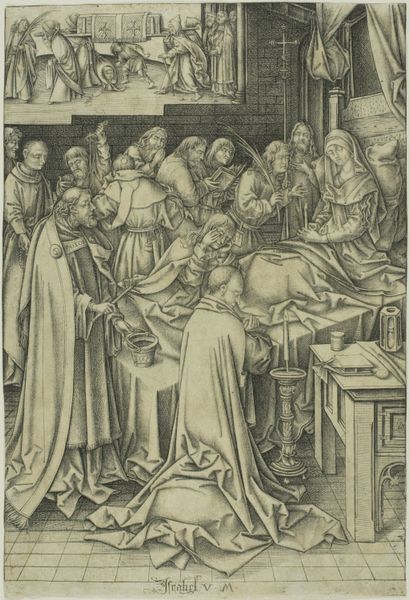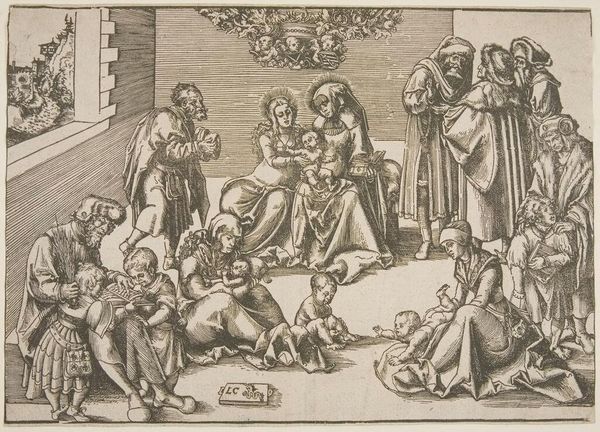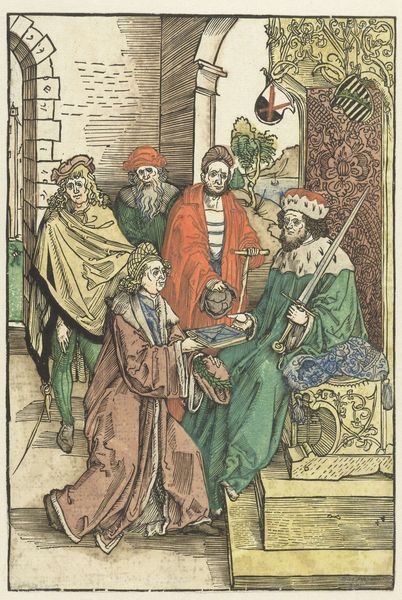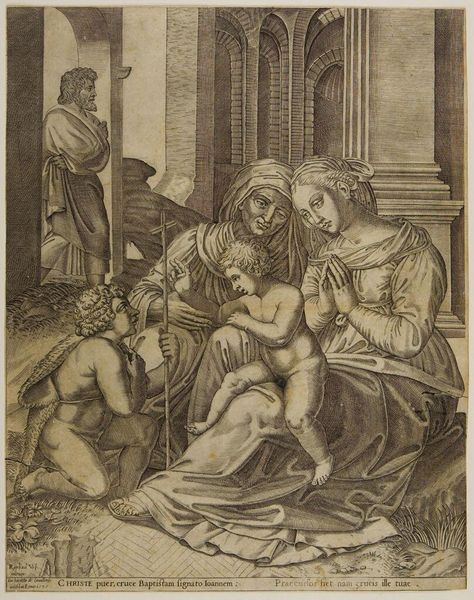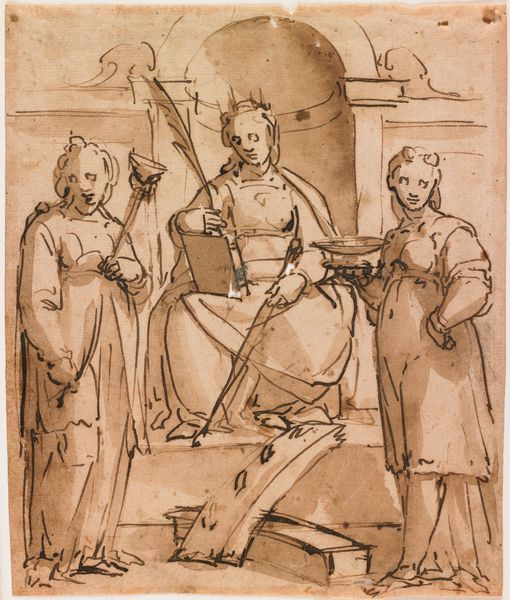
painting, oil-paint
#
portrait
#
painting
#
oil-paint
#
figuration
#
11_renaissance
#
oil painting
#
genre-painting
#
history-painting
#
northern-renaissance
Copyright: Public Domain: Artvee
Curator: Let’s discuss Lucas Cranach the Elder's “Hercules with Omphale,” painted around 1535 using oil paint. What strikes you first about this piece? Editor: The subdued color palette, predominantly reds, blacks, and creamy whites, evokes a melancholic atmosphere. Hercules looks… strangely docile, almost uncomfortable, surrounded by these women. Curator: Cranach certainly had a specific agenda. Consider the context: this painting, likely commissioned by a wealthy patron, recasts the legendary strongman Hercules in a subservient, feminized role. Editor: Indeed, we see Omphale holding his club while he's relegated to spinning thread, an overtly feminine occupation. What is interesting to consider is Cranach’s use of linear perspective. This flattening effect forces us to really examine the relationships of each character. The light on the figures allows the viewer to inspect the finery of dress in this historical depiction. Curator: Exactly. By depicting this mythical scene with such contemporary details—the clothing, the hairstyles—Cranach brings it into the world of his patrons, speaking to their social values and concerns about gender roles and power dynamics. Also notice the pheasant hanging in the background. It symbolizes fertility but the creature is hung, almost drained of life. What are your thoughts on this symbol? Editor: That's a keen observation. Formally, the composition draws your eye to this point as well. Given this perspective it may imply the literal draining of the virility of Hercules’ life as a symbol for masculine subservience. I notice that there is not a strong use of contrast as well. Almost the figures appear flat without the deep use of shading. Curator: He was known for it and to an extent I agree, but I wouldn't fully disregard his careful layering of glazes, which create a subtle depth in the skin tones and fabrics. His artistic practice would often repeat and recycle woodblock patterns. The material and his craftsmanship speak of the Northern Renaissance obsession with detail while challenging existing classical values of art-making. Editor: I am struck by Cranach's ability to imbue a known classical myth with contemporary anxieties and aspirations using carefully deployed visual and material strategies. Curator: And for me, reflecting on Cranach's working process enhances my understanding of the piece and gives an important social critique on the roles and performances of both men and women of the era.
Comments
No comments
Be the first to comment and join the conversation on the ultimate creative platform.
